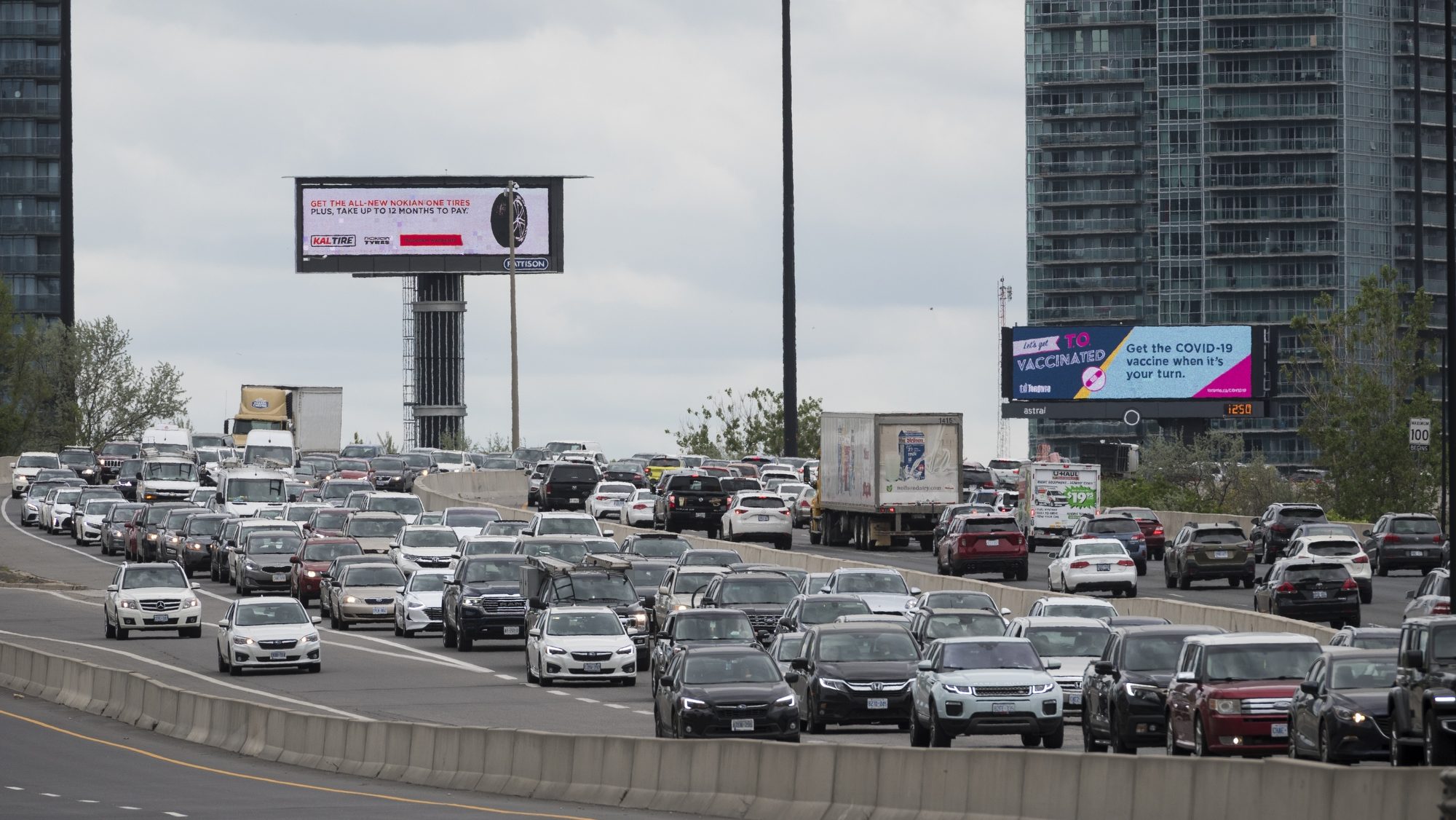Infra
Ontario to help speed up Gardiner Expressway construction

The Ford government announced Wednesday it is providing the City of Toronto up to $73 million to help accelerate construction on the Gardiner Expressway, which could end a year earlier than initially projected.
This updated timeline could move the construction completion date from April 2027 to at least April 2026.
Transportation Minister Prabmeet Sarkaria said the province is providing the money on the condition that work be allowed to proceed on a 24-7 basis.
“Changes are also planned to reopen that Jameson on-ramp to the Gardner as part of this project,” he added.
He also said if the construction company doesn’t meet this new timeline, that extra money will not be paid out.
Sarkaria provided the update at City Hall alongside Toronto Mayor Olivia Chow.
“Together with the provincial government, we can rebuild the Gardiner Expressway more quickly and ease the painful congestion in downtown Toronto,” Chow said. “Working together, we can repair our aging infrastructure, ensure that the Gardiner Expressway is safe and help people get around our city easier.”
As for the noise associated with the 24-7 work, the loudest demolition will be limited to certain hours, as a large number of people living in the Liberty Village area are affected by the construction.
“The more noisy demolition work will happen during the day, in the evenings, and according to a schedule,” said Ausma Malik, Deputy Mayor and Spadina-Fort York councillor.
Construction has hampered Toronto traffic for months
City and provincial officials acknowledged Wednesday that in the first three months of work, construction between Dufferin Street and Strachan Avenue has caused major congestion issues for drivers coming into and out of the city.
During an interview marking her one year in office, Chow teased a construction update, telling Breakfast Television she understands how congestion on the Gardiner has been frustrating for drivers.
“We’re working to speed up the rebuild of the Gardiner. We’re not just fixing it; we’re rebuilding it. We’re looking at making it faster… we’re working with the province to make the construction faster,” Chow said.
“People are stuck there. I get it.”
The six-phase rehabilitation project was approved by Toronto City Council between 2014 and 2016.
From mid-April to mid-2027, the Gardiner was to be reduced to two lanes in each direction between Dufferin and Strachan with intermittent additional lane closures as required. The eastbound on-ramp from Lake Shore Boulevard east of Jameson Avenue will also be closed.
In 2026, the Gardiner will be fully open to accommodate increased traffic during Toronto’s hosting of the FIFA World Cup.
The city has said route diversions, traffic agents, adjustments to signal timings and other technology will be used to improve congestion around the construction zones.
According to data from Geotab Intelligent Transportation Systems (ITS), an Oakville-based technology company that, with the help of artificial intelligence, leverages advanced data analytics to enhance fleet performance, travel times on the Gardiner have increased up to 250 per cent in the morning rush hour (7 to 10 a.m.), and 230 per cent in the afternoon rush hour.
Since repairs began on the Gardiner in late March, commercial drivers spend 80 per cent more time on the Gardiner per day, and the top three alternate routes—Harbour Street, Lakeshore Boulevard, and Cherry Street—have seen an average traffic increase of 43 per cent.
With files from Kevin Misener, 680 News Radio Toronto









